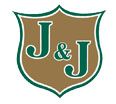Of the more than 3,100 termite species that have been documented worldwide, the Formosan subterranean termite (FST) is the most widespread, as well as the most economically damaging species. The FST has established a thriving and invasive habitat throughout much of the southern half of the US, and while this species is tremendously destructive in Florida and Hawaii, Louisiana sees the greatest amount of annual FST related property destruction, especially in New Orleans.
This species is unique for establishing colonies that rapidly grow to contain more than ten million individual termites, and workers are able to travel more than 300 feet through soil where they are likely to encounter and infest timber-framed structures. In the vast majority of FST infestations, workers alone are responsible for both initiating infestations as well as eating away at structural lumber. However, reproductive alates of this species become a tremendous nuisance to homeowners during the spring and summer seasons when thousands swarm around outside light sources at dusk and during the evening hours.
The heaviest and most frequent FST swarms occur during May and June each year in Louisiana. FST colonies mature for a period of around 5 years before alates take flight, and although alates are a serious nuisance, they very rarely establish infestations in structural wood, unlike drywood termite alates. This is because FST, like native subterranean termites, require copious amounts of moisture from the ground soil in order to survive, but in rare cases, a pair of alates may initiate an infestation in damp structural wood, making it unnecessary for the pests to maintain contact with the ground soil. Infestations of this sort are known as “aerial infestations,” and they often occur on flat-roofed homes and buildings where pooled water provides more than enough moisture for maturing colonies.
Have you ever witnessed FST alates swarming around your indoor light sources?
Tags: Termite Control, Termite Exterminator, Termite Inspection



